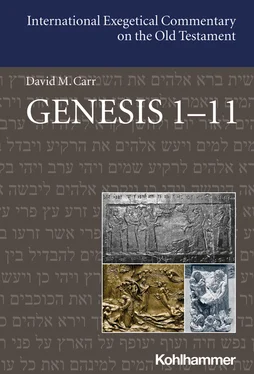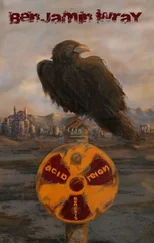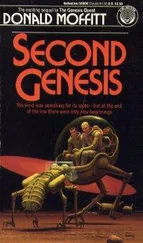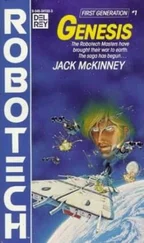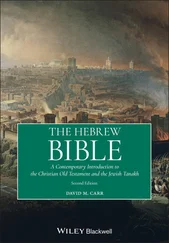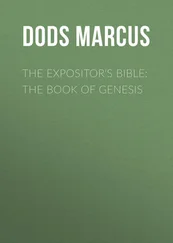David M. Carr - Genesis 1-11
Здесь есть возможность читать онлайн «David M. Carr - Genesis 1-11» — ознакомительный отрывок электронной книги совершенно бесплатно, а после прочтения отрывка купить полную версию. В некоторых случаях можно слушать аудио, скачать через торрент в формате fb2 и присутствует краткое содержание. Жанр: unrecognised, на английском языке. Описание произведения, (предисловие) а так же отзывы посетителей доступны на портале библиотеки ЛибКат.
- Название:Genesis 1-11
- Автор:
- Жанр:
- Год:неизвестен
- ISBN:нет данных
- Рейтинг книги:4 / 5. Голосов: 1
-
Избранное:Добавить в избранное
- Отзывы:
-
Ваша оценка:
- 80
- 1
- 2
- 3
- 4
- 5
Genesis 1-11: краткое содержание, описание и аннотация
Предлагаем к чтению аннотацию, описание, краткое содержание или предисловие (зависит от того, что написал сам автор книги «Genesis 1-11»). Если вы не нашли необходимую информацию о книге — напишите в комментариях, мы постараемся отыскать её.
Genesis 1-11 — читать онлайн ознакомительный отрывок
Ниже представлен текст книги, разбитый по страницам. Система сохранения места последней прочитанной страницы, позволяет с удобством читать онлайн бесплатно книгу «Genesis 1-11», без необходимости каждый раз заново искать на чём Вы остановились. Поставьте закладку, и сможете в любой момент перейти на страницу, на которой закончили чтение.
Интервал:
Закладка:
On one level, the appearance of light at the outset of the creation process, long before the creation of heavenly bodies (1:14–18), might seem odd, and it has troubled some previous commentators. 66Yet, within the present text, the placement of “light” at the outset of Gen 1:3ff. is crucial in introducing the “day” and thus initiating the seven-day, Sabbath-oriented time structure that characterizes 1:3–2:3 as a whole. 67In this sense, echoes of Sabbath already ring at the outset of creation.
Gen 1:6–8. The creation of the heavenly plateThe second day follows a sequence similar to the first and others, starting with the decisive divine speech where God expresses an intention to have a heavenly plate to divide the primeval waters (1:6; see 1:2). The plate that God then creates (1:7) creates a crucial air bubble in which the rest of creation can take place. This, following God’s creation of light on day one, represents the final, brand new building block of creation. From this point forward, much of the rest of God’s creation will involve creation components cooperating with God: waters gather (1:9), earth sprouts plants (1:11–12), waters are called on to swarm with living beings (1:20; cf. 1:21), and earth is called on to bring forth animals (1:24; cf. 1:25). A correspondence formula then follows (unless the LXX placement of this formula in 1:6b is original), “and it was so” (ויהי כן) emphasizing the correspondence of this creation act (1:7a) with God’s order (1:6), and this heavenly plate is then named “heaven” (1:8a) before the second day label is given (1:8b). As noted above, this creation act is the only one that has no statement, at least in textual witnesses other than the LXX, that God “saw that it was good” (cf. 1:4a, 10b, 12b, 18b, 21b, 25b, 31a).
Gen 1:9–10. The gathering of waters and revealing of dry ground-earthThe first part of day three involves the emergence of dry land, starting with God’s next creation speech calling on the waters to “assemble themselves” so that the dry land appears (1:9a). As a command for created order, this call relates not only to the initial execution of this order that follows, but also to the way that waters can be observed “assembling themselves” even today in an ongoing way into puddles, lakes, and oceans.
The text then continues with a correspondence formula, and—as noted above—probably included a Hebrew counterpart to the Septuagint’s report (possibly partially preserved in 4QGen k) that “the waters under the heavenly plate assembled themselves into their gathering places, and the dry ground appeared.” Thus, in this initial execution of God’s creation order, the previously submerged and uninhabitable earth (1:2aα) is here opened to the air by God having the waters gather into various gathering places (Gen 1:9 LXX). Though there is a slight divergence between God’s order that waters assemble themselves into “one place” (מקום אחד; 1:9) and the report (in the plus reflected in the LXX) that they assembled themselves into their multiple gathering places (Greek συναγωγὰς αὐτῶν, probably translating מקויהם), both concepts contrast with the contemporary scientific concept of continents lying in oceans. Instead, the earthly biome is imagined in this text as dry land with water heaped up in spots within it. 68
This is the first locus in Gen 1 where parts of creation respond to and cooperate with God’s stated decrees. The featuring of waters responding to God’s orders corresponds to the idea in some pre-biblical cosmogonies that elements of creation, especially water figures like Tiamat or Apsu, have their own subjectivity. The Enuma Elish epic, for example, focuses on Marduk’s battle with and victory over Tiamat, a monster representing the ocean/salt water. More specifically, Psalm 104:6–7 describes the sound of Yhwh’s thunder powerfully forcing the waters covering the earth into a single place established for them. Nevertheless, Gen 1:9–10 contrasts with the Enuma Elish epic in lacking any personal characterization of the “waters” (no Tiamat here), and it likewise lacks some of the violent power seen in Psalm 104’s description of Yhwh’s restriction of the ocean. Instead, the “waters” in Gen 1 are not divine (cf. the Enuma Elish epic) or resistant natural forces (Psalm 104), but aspects of nature totally subservient to and cooperative with God’s divine will.
The description of this creation act concludes with God naming the revealed dry ground “earth” and the gathered waters “seas,” and then seeing that they were good (1:10). These are the last divine namings in Gen 1, marking the conclusion of the structural groundwork for creation: “light,” “darkness,” “heaven,” “earth,” and “sea.” There is no day formula here because day three features two creation acts, the next one following in 1:11.
Gen 1:11–13. The earth sprouting seed-bearing plants and fruit-bearing treesGod’s next speech, like the first one on day three, calls on an aspect of creation to participate in the creation process, and there may be echoes here of ancient Near Eastern ideas of earth as the mother of life. But those echoes are faint, only consisting in the obedience of earth to God’s initial statement of intention “let the earth sprout forth sprouting plants…,” with the figura etymologica match between verb (sprout, דשא) and initial description of plants (דֶשֶׁא) in the divine speech helping to emphasize, through language, the coherence of the creation event. The text goes on to focus on two types of self-replicating plants, those that bear seeds (מזריע זרע) versus those that have fruit whose seed is inside it (אשר זרעו־בו … עץ פרי עשה פרי), each “according to its kind.” This is followed by the correspondence formula and a description of how the earth did sprout forth seed and fruit-bearing plants (11:11b–12).
In this creation of the plant world we see the clearest differentiation yet between God’s speeches in Gen 1 that command an ongoing element of creation order and the following reports that narrate the beginning of the execution of God’s commands. God’s order that the “earth sprout forth vegetation” in Gen 1:11 does not just hold for the initial creation, but institutes a longer-term order where plants will come forth from the earth. When earth then sprouts forth plants, each with seeds “according to its kind” (1:12), provisions are in place for this order to continue . Indeed, the focus already in God’s speech on how and where each plant carries its seeds indicates this focus on the self-replicating character of plants, and this will reappear in the creation of other living parts of creation in Gen 1. 69On the one hand, within Gen 1 there are the foundational, named, building blocks of creation—heaven, earth, seas featured in 1:6–13. On the other, there are the living elements that God has sprout from them and then self-replicate according to their kinds: plants, sea and air creatures, non-human animals, and humans. Seed and fruit-bearing plants are the first of the latter, self-replicating type. Yet they are distinguished from animals by the fact that they are fixed in place as earth’s plant covering, thus constituting a part of the cosmic house that God builds in contrast to the moving beings with which God later populates that house (Gen 1:21–27). 70
The focus on seeds and fruit thus begins an emphasis in Gen 1 on God’s creation of a human biome that can sustain itself long after God’s initial creation work is finished. Moreover, the plant-focused food instructions at the end of the chapter (1:29–30) indicate that plants are considered to be a food-providing aspect of earth. There it is stressed that humans have the privilege of eating the seeds and fruits that are particularly emphasized in Gen 1:11–12, while earth-based animals are restricted to the leafy portions of these plants. In this way, even the general description of creation of plants in Gen 1:11–12 anticipates the concluding focus of the chapter on humans.
Читать дальшеИнтервал:
Закладка:
Похожие книги на «Genesis 1-11»
Представляем Вашему вниманию похожие книги на «Genesis 1-11» списком для выбора. Мы отобрали схожую по названию и смыслу литературу в надежде предоставить читателям больше вариантов отыскать новые, интересные, ещё непрочитанные произведения.
Обсуждение, отзывы о книге «Genesis 1-11» и просто собственные мнения читателей. Оставьте ваши комментарии, напишите, что Вы думаете о произведении, его смысле или главных героях. Укажите что конкретно понравилось, а что нет, и почему Вы так считаете.
